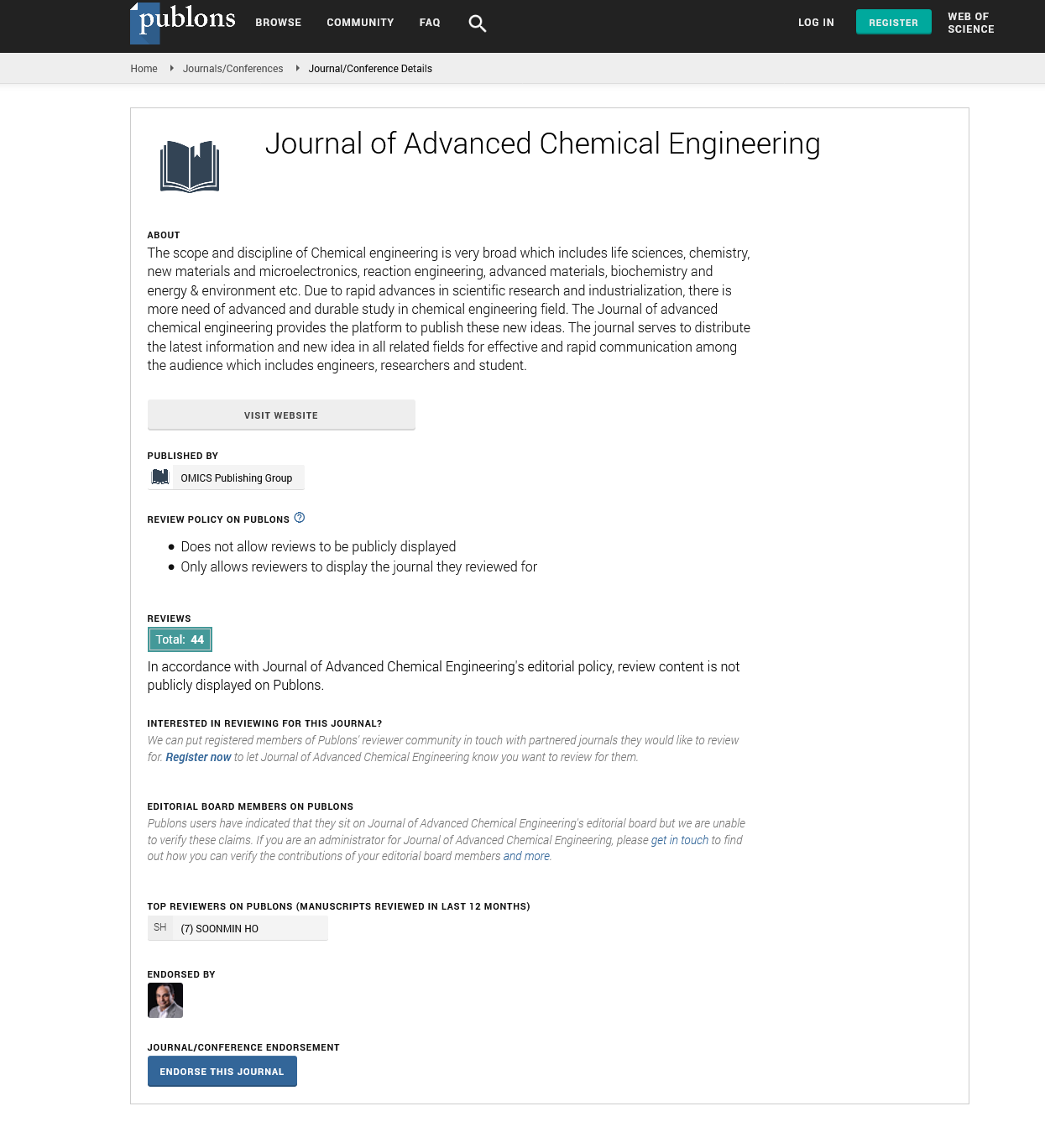Indexed In
- Open J Gate
- Genamics JournalSeek
- Smithers Rapra
- RefSeek
- Directory of Research Journal Indexing (DRJI)
- Hamdard University
- EBSCO A-Z
- OCLC- WorldCat
- Scholarsteer
- Publons
- Geneva Foundation for Medical Education and Research
- Google Scholar
Useful Links
Share This Page
Journal Flyer

Open Access Journals
- Agri and Aquaculture
- Biochemistry
- Bioinformatics & Systems Biology
- Business & Management
- Chemistry
- Clinical Sciences
- Engineering
- Food & Nutrition
- General Science
- Genetics & Molecular Biology
- Immunology & Microbiology
- Medical Sciences
- Neuroscience & Psychology
- Nursing & Health Care
- Pharmaceutical Sciences
Editorial - (2021) Volume 11, Issue 3
Countercurrent Exchange In Kidney
Alsadig DY Chemical Engineer*Received: 07-Jul-2021 Published: 30-Jul-2021, DOI: 10.35248/2090-4568.21.11.e197
Introduction
A crossing of some attribute, usually heat or some chemical occurs between two flowing bodies flowing in opposite directions to each other, a mechanism that occurs in nature and is reproduced in industry and engineering. Liquids, gases, or even solid powders, or any mix of these, might be the flowing bodies. Because countercurrent exchange maintains a slowly dropping differential or gradient, it can achieve a maximum quantity of heat or mass transfer than co-current (parallel) exchange. The initial gradient in concurrent exchange is larger, but it quickly levels off, resulting in wasted potential. When set up in a circuit or loop, countercurrent exchange can be used to build up concentrations, heat, or other attributes of flowing liquids. The system is known as a counter-current multiplier when it is set up in a loop with a buffering liquid between the incoming and outgoing fluids running in a circuit and active transport pumps on the outgoing fluid's tubes, allowing a multiplied effect of many small pumps to gradually build up a large concentration in the buffer liquid.
Concurrent flow (half transfer)
The two fluids flow in the same direction in the concurrent flow exchange process. A concurrent exchange system has a changing gradient along the length of the exchanger, as seen in the diagram of concurrent and countercurrent exchange mechanisms. No matter how long the exchanger is, with equal flows in both tubes, this form of exchange can only move half of the property from one flow to the other. When flows are unequal, the equilibrium condition will be closer to the conditions of the stream with the higher flow.
Counter-current flow (almost full transfer)
The two flows are moving in opposite directions. A liquid flows in opposite directions between two tubes, transmitting a property from one tube to the other. Over the whole length of contact, the counter-current exchange system may maintain a relatively constant gradient between the two flows. This can result in practically all of the property being transferred if the length is long enough and the flow rate is low enough.
Counter-current multiplication loop
A countercurrent multiplication loop is a system in which fluid circulates in a loop with identical low concentrations of dissolved substance at the entrance and exit, but a high concentration of that substance at the far end of the loop. The concentrated chemical is received in a buffer liquid between the incoming and exiting tubes. The incoming flow has a semipermeable membrane with water moving to the buffer liquid by osmosis at a modest gradient, starting at a low concentration. The concentration inside the loop gradually increases until it reaches its peak at the loop's tip.
Counter-current exchange in the kidney
By leveraging active transport on the leaving nephrons, a fluid circuit in the Loop of Henle, an important portion of the kidneys, allows for slow accumulation of urine concentration in the kidneys. The flow sequence follows from Renal capsule to ureter.
Acknowledgments
The authors are grateful to the journal editor and the anonymous reviewers for their helpful comments and suggestions.
Declaration of Conflicting Interests
The authors declared no potential conflicts of interest for the research, authorship, and/or publication of this article.

